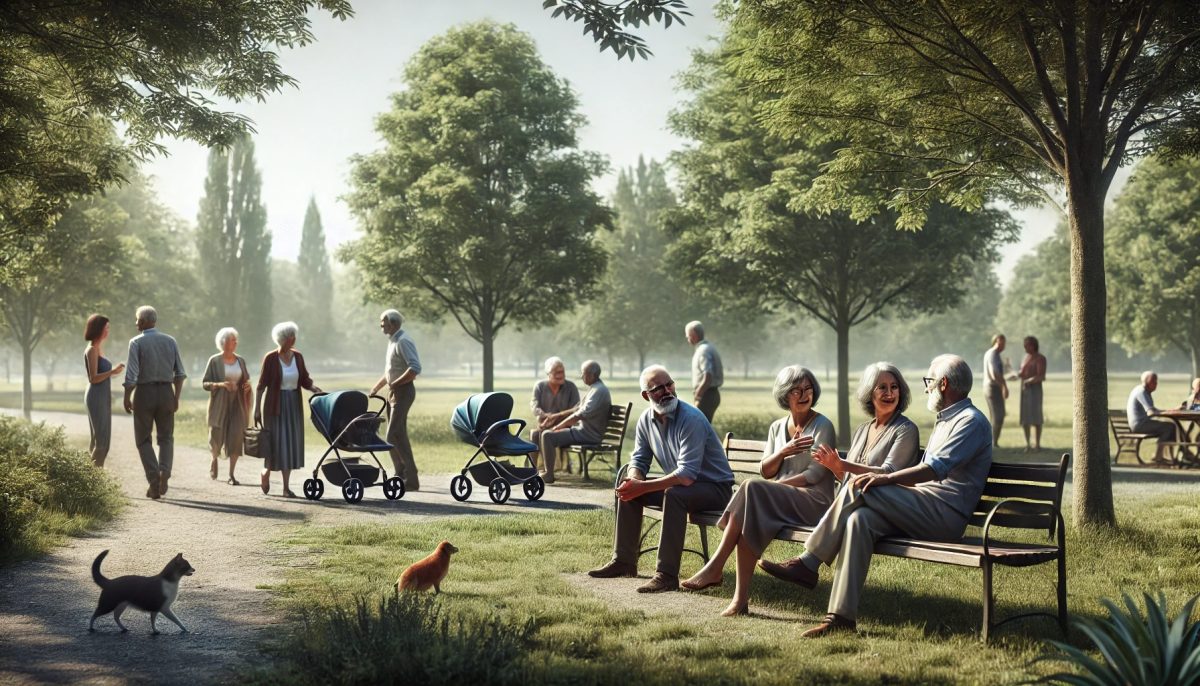The Political and Policy Implications
In summary, the challenges facing current policy and politics are:
Ageing population: With more deaths than births, the UK faces an increasing proportion of elderly people, leading to higher demands for healthcare and social care, and a shrinking working-age population to support these services.
Economic strain: Fewer births and an ageing population risk creating an imbalance between the number of people paying taxes and those reliant on state pensions and public services, potentially slowing economic growth and increasing fiscal pressures.
Workforce shortages: As the working-age population declines, sectors such as healthcare, education, and technology may experience labour shortages, necessitating greater reliance on immigration or shifts in workforce policies.
Regional inequalities: Urban areas with younger populations may thrive, while rural areas with ageing populations might struggle to maintain essential services, exacerbating regional economic disparities.
Delayed parenthood: With more people postponing childbearing, birth rates might rebound in later decades, but this depends on socio-economic factors and advances in reproductive technology, creating uncertainty for long-term demographic planning.
The need for a global change in economic models
Overconsumption and climate change: Larger economies, like the UK, contribute disproportionately to climate change due to high levels of consumerism. A declining population could reduce overall consumption, leading to lower carbon emissions and less environmental degradation, making it an opportunity to mitigate climate impacts.
Resource sustainability: With fewer people, the demand for natural resources such as energy, water, and food would decrease. This could ease the strain on ecosystems and help move society towards a more sustainable balance, potentially supporting efforts to combat climate change.
Economic transition challenges: While reducing population size may benefit the environment, it can lead to economic difficulties, particularly for growth-dependent models. As population declines, demand for goods and services may shrink, requiring shifts in economic structures and potentially rethinking growth-driven capitalism.
Social care and demographic balance: A smaller population will likely mean fewer working-age individuals to care for a growing elderly population, increasing the burden on social services. However, it could also encourage innovation in automation, healthcare efficiency, and workforce policies to address these challenges without exacerbating environmental strain.
Policy and cultural shifts: Reducing population size will require a major shift in societal values, moving away from consumption-driven lifestyles. Governments may need to implement policies that prioritise sustainability over growth, and society might need to embrace a new cultural understanding of well-being, less tied to material consumption.
Alternatives to Growth-Driven Capitalism
Alternatives to growth-driven capitalism emphasise sustainability, social well-being, and equitable resource distribution rather than continuous economic expansion. These models challenge the notion that perpetual growth is necessary for societal progress. Here are some prominent alternatives:
- Degrowth: Degrowth advocates for reducing overall economic activity to achieve environmental sustainability and social equity. It focuses on shrinking consumption, especially in wealthy countries, while improving quality of life through less materialistic values. Degrowth encourages local economies, reduced work hours, and a focus on community well-being over GDP growth.
- Steady-State Economy: A steady-state economy maintains a stable or mildly fluctuating level of economic activity within ecological limits. It prioritises sustainable resource use, minimising waste and consumption, and focuses on stabilising population size. The goal is to create a balance between economic activity and environmental capacity, ensuring that human demands do not exceed planetary limits.
- Circular Economy: The circular economy model aims to eliminate waste and create systems where resources are reused, repaired, or recycled continuously. It contrasts with the linear “take-make-dispose” model, focusing instead on designing products and processes that keep materials in circulation, minimising the need for new resource extraction and reducing environmental impacts.
- Post-Growth Economy: This approach advocates for moving beyond GDP growth as the primary measure of success. It promotes focusing on well-being, equality, and environmental sustainability. Post-growth economists argue that societal progress should be measured by factors like health, education, and environmental quality rather than by economic output.
- Ecological Economics: Ecological economics integrates economic activity with ecological sustainability. It views the economy as embedded within ecosystems and insists on recognising planetary boundaries. This approach promotes policies that maintain environmental health, such as carbon caps, resource taxes, and limits on extraction, aiming to balance economic needs with environmental preservation.
- Well-Being Economy: In this model, the primary goal of the economy is to promote human well-being rather than material wealth. It shifts the focus from growth to quality of life, measuring success through indicators like health, education, mental well-being, and community cohesion. Policies may include universal basic income, shorter work weeks, and investment in public services.
- Solidarity Economy: The solidarity economy promotes social and economic systems based on cooperation, mutual aid, and democratic governance. It prioritises collective ownership, ethical business practices, and the redistribution of wealth. Co-operatives, community land trusts, and localised economies are common components of this model, aiming to support equitable access to resources.
These alternatives share a common emphasis on sustainability, well-being, and equity, aiming to create economies that function within environmental limits while improving human welfare without relying on endless growth.

